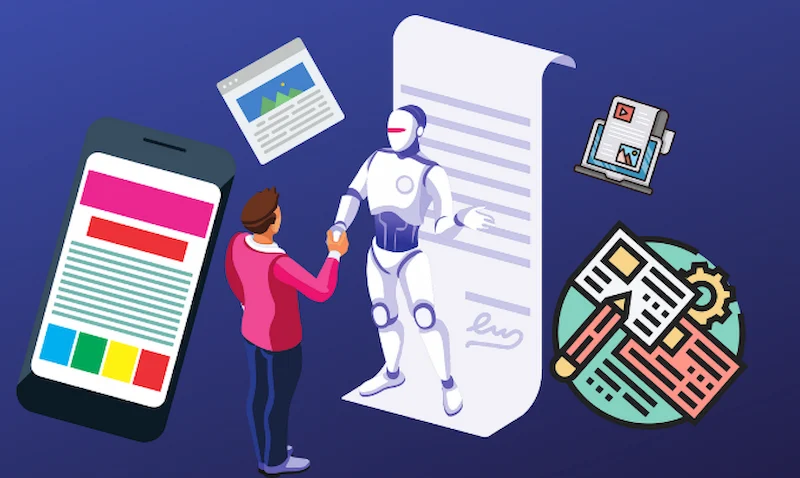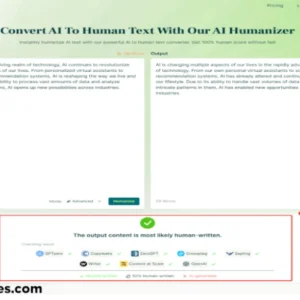AI-powered content creation tools have significantly reduced the time and effort needed to generate high-quality video content. Among the most effective formats for engagement and reach are listicle videos — short, structured videos that break down information into easy-to-digest points. The process of generating these videos is now faster and more accessible thanks to AI tools that can scan content sources, identify key ideas, and convert them into compelling visuals.
This article outlines five practical ways to use AI tools to scan content ideas and turn them into listicle-style videos for digital platforms.

1. Scan Search Trends to Find High-Interest Topics
The foundation of any good listicle video is a topic that resonates with your target audience. One of the most effective ways to identify such topics is by scanning search trends. Tools like keyword planners and question analyzers can help you uncover what users are actively searching for in your niche.
AI-powered software can further streamline this process by automating the scan and interpretation of search intent. These tools analyze large sets of data—search queries, autocomplete suggestions, and related questions—to recommend video-worthy topics. Once a theme is identified, AI can assist in structuring the listicle format by organizing the content into a clear and sequential outline.
For example, if a trending query is “how to improve remote work productivity,” an AI system can extract key points such as “time management tools,” “ergonomic setups,” and “team communication tips” to serve as segments in your video.
2۔ Convert Articles or Documents into Listicle Outlines
Once a topic is chosen, the next step is to gather supporting information. Rather than manually reading and summarizing articles, AI tools can scan written content—such as blog posts, whitepapers, or reports—and extract the most relevant points. This scanned data is then restructured into a listicle-ready format.
Natural Language Processing (NLP) plays a key role here. It helps AI systems understand sentence structure, highlight key takeaways, and eliminate redundant or irrelevant information. This approach ensures that only essential details are included in your video, making it more focused and viewer-friendly.
From there, the AI takes the summarized points and begins building visual scenes for each item on the list. This process typically includes automated selection of relevant images, background music, text placement, and voiceovers, depending on the tool in use.
3۔ Use an AI Listicle Video Maker to Automate Visual Creation
After scanning content and generating an outline, the final step is visualizing each point. This is where an AI listicle video maker becomes essential. These tools take the structured list of key points and automatically generate short-form videos with text overlays, relevant stock visuals, and transitions.
The tool is designed for simplicity. You input your topic or text, and the system uses pre-built templates optimized for listicle formats. It detects the tone and category of the content and suggests matching visuals and styles. Users can also select a voiceover or upload their own, while the tool syncs audio with text animations and scene changes.
This automation is particularly useful for marketers, content creators, and educators who need to produce multiple videos in a short period. Instead of editing each frame manually, the system compiles a polished video based on your chosen theme and format, saving hours of post-production time.
4. Create and Edit Videos on Mobile with an AI Video Generator App
In today’s content landscape, flexibility is key. Whether you’re on a tight schedule or managing content from different locations, being able to work on mobile devices is a major advantage. An AI video generator app allows users to create, edit, and publish listicle videos directly from their smartphones or tablets.
The mobile interface is optimized for ease of use. Users can start by pasting a text script or selecting from pre-written templates. The app then processes the content, matches it with stock visuals and music, and generates a video preview. Adjustments to text, transitions, or voiceovers can be made on the fly, and the final video can be downloaded or shared instantly.
One of the key features is AI voice generation and subtitle syncing. These elements help make videos accessible and professional without requiring voice actors or manual transcription. Additionally, the app includes tools for aspect ratio switching, which is essential for adapting videos to platforms like YouTube Shorts, Instagram Reels, and TikTok.
5. Repurpose Existing Content into New Video Formats
AI tools also support the repurposing of older or underused content. Blogs, newsletters, and even customer support articles can be scanned and transformed into listicle videos. This practice extends the life of existing content and helps maintain a consistent posting schedule across platforms.
For instance, a blog post titled “Top 7 Productivity Tools for Remote Teams” can be repurposed into a video with each tool as a scene. An AI system scans the article, extracts the headings and descriptions, and builds a visual sequence. With a few adjustments to visuals and narration, the result is a new video optimized for social engagement.
This approach is particularly effective for brands or creators managing large content libraries. Instead of starting from scratch, AI enables the reformatting of proven content into new formats with minimal input.
Conclusion
The integration of AI in content creation has opened up new possibilities for video marketing. By scanning online trends, summarizing long-form content, and automating video production, AI tools help creators streamline the entire workflow from idea generation to final export.
Using an AI listicle video maker allows you to create professional, engaging videos without needing advanced editing skills. For even more flexibility, the AI video generator app enables mobile content creation, letting users build and share videos from anywhere.
These tools make it possible to maintain a high output of content, adapt quickly to trends, and engage audiences across multiple platforms—all with minimal manual effort.
Let AI handle the production while you focus on strategy and creativity.
Visit the rest of the site In Tech Times for more interesting and useful articles. Thank you!




